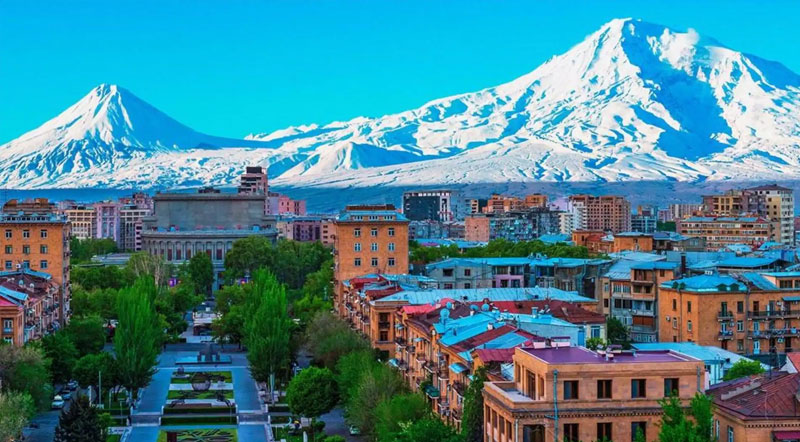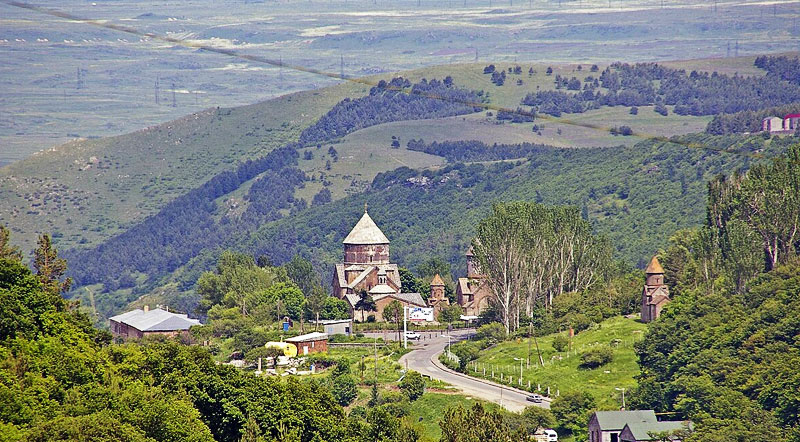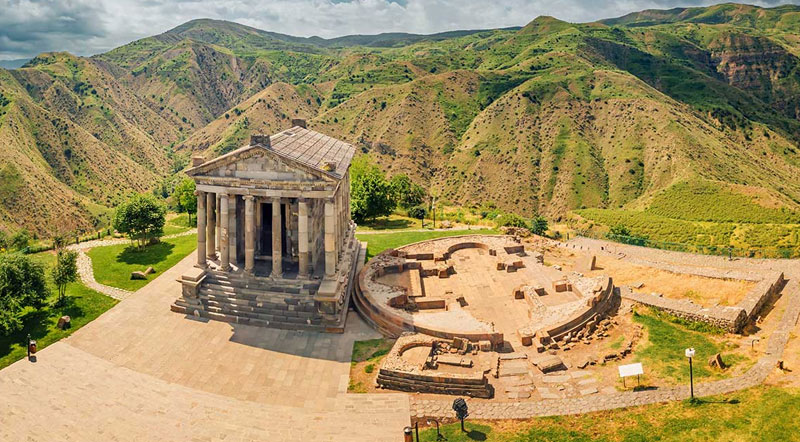Colors of Armenia
Armenia 4 nights / 5 days

Armenia 4 nights / 5 days


Yerevan is one of the most ancient cities in the world. Despite its history of centuries, the present and the past coexist in harmony inside its walls. This is evidenced by the spirit the city is filled with. New buildings, monuments, fountains, memorials and parks appear side-by-side with the architecture of centuries and complement the image of Yerevan together. Being a reminiscent of “sun rays”, the city itself disposes to long, yet never tiring walks. The weather will delight you with its lack of rains, hot summers, clear blue sky and multitudes of sun and color. The city is literally saturated with bright light. You can see a magnificent panorama overlooking Mount Ararat from any height or elevation. This is the breathtaking view our capital begins with, always happy to host any newcomers with great love. Our tour offers you to get to know Yerevan from the side that the residents of the city themselves know.
Our tour will introduce you to such famous places as: Republic Square, Marshal Baghramyan Avenue. A visit to the Tsitsernakaberd Memorial Complex dedicated to the memory of the victims of the Armenian Genocide with a stop in Victory Park with an overview of the Mother Armenia monument and the famous panoramic view of the city center. Mandatory walk along the Northern Avenue and the open-air museum of the Cascade complex.

Thirty kilometers from Yerevan is a true ecological paradise that has the name of Tsaghkadzor. "Blooming Gorge" is a literal translation and the most literal description of this place. It has everything to surprise even the most captious guest at any time of the year. In the summertime, this is an incredible forest, blooming flora, clear air and infinite tranquility. In winters, on the contrary, the city comes to life and transforms itself into a ski resort with crisp snow, ropeway and slopes for skis and snowboards. The ancient name of the city is Kecharis, which is literally translated as “birch grove”. There is a monastery in the city that bears the same name and is still in effect.
Lake Sevan is one of the first associations that comes to mind after mentioning Armenia. It is the largest source of fresh water for the country and the also the biggest in the whole Caucasus. Surrounded by mountain ranges at an altitude of about 1900 meters above sea level, Sevan is striking in its beauty and azure-blue water surface. The lake has a small peninsula, at the top of which is located the monastery of Sevanavank. In a complex with several buildings, the monastery has been preserved since the 18th century and is still in effect. From a height, it seems that the mountains and the water merge together and there is not a single border between them. Watching the endless play of the waves shimmering under the sun makes one mistake it for a sea. This association is truthful indeed. In the ancient Armenian sources, Sevan was called “the Geghama Sea”, or was simply referred to as “the sea”. Amazing nature combines rocky landscape and pine mini forests located alongside the coast. Once here for the first time, you begin to feel the infinite harmony and inner peace. We invite you to immerse yourself in this feeling and relax both mentally and physically.

Garni temple, which towers over a triangular cape, is the unique survived example of heathen culture in Armenia. It is a blend of Greco-Roman and Armenian styles. King Trdat The First ordered building the temple in the first century AD and dedicated it to the God of Sun. After adopting Christianity in 301, the pagan temple lost its significance and the fortress of Garni became the summer residence of the kings. Nowadays the ruins of the royal palace and the bathroom with a stunning mosaic work can be found near the temple.
In Garni canyon one can explore stunning geological monuments, represented by columnar basalts, which are the result of lava flows. Basalt masses are broken into polyhedral columns, which, due to their regularity of form, have gained the name "Basaltic Organ".
Geghard monastery is the unsurpassable masterpiece of the 13th century Armenian architecture. Some of the churches of the complex are masterfully hewn in a huge rock. From the outset the complex was called Ayrivank (cave monastery), later it was renamed Geghard (lance) as the lance, used by the roman soldier to sting Jesus Christ's side, had been kept in this monastery for many centuries. Due to its construction, Geghardavank serves the best place for singing spiritual songs. The complex is rich in subtle sculptural embellishments and many striking khachkars (cross-stones). The site is included in UNESCO World Cultural Heritage List.